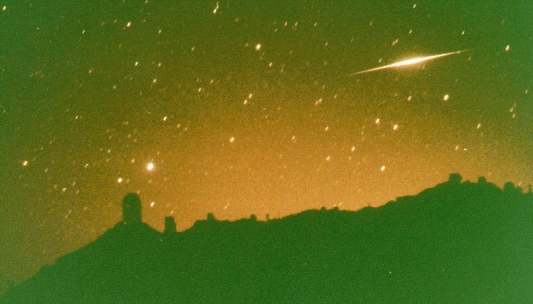

It can be surprising to find out how many artificial satellites are visible with the naked eye, at the right time and place. Since the weather has been less than cooperatire, this is an exercise to go, to be done during this coming week.
In class we will review a bit of orbital geometry and the conditions for seeing a satellite, along with what makes some of them flare as they catch the sunlight, and how the magnituide scale works so you'll know how bright is bright. Then you will prepare to go spot one.
1. Pick a likely satellite, starting with the Heavens-Above site. That link starts you out in Tuscaloosa; change if you'll be travelling. For a couple of nights when the weather looks good, peruse the list and pick an interesting bright one. ISS is always bright and easy; HST is often bright and is very interesting toi astronomers. You may want to generate a chart showing the predicted path in the sky.
2. Now go find it! You will need to make a written report with time spotted, where it was against the stars, how bright it became, whether there were any distinct flashes or flares, and where in the sky it vanished into the Eath's shadow.
There are numerous special interest satellites. The Iridium phone constellation (now at 90+ satellites, not bad for a bankrupt firm) has flat antennae which make excellent mirrors; some of these flares become briefly visible in daylight. One is shown in the picture above, becoming about 5 times as bright as Venus. The Navy's NOSS satellites are spooky, since they come in triplets. The high-orbiting Lacrosse reconnaissance satellite are orange because of their thermal foil coverings. ISS is now large enough to show a definite shape if you can track it telescopically. HST varies hugely in its brightness, depending on which way it's pointing; flares from flat surfaces on it are not unusual. Many of the Russian SL-16 upper stages tumble, flashing every couple of seconds as they do so. And space shuttles may do interesting things such as be seen close to docking with the International Space Station or dumping excess water.
Some other useful WWW resources include:
Last changes: 10/2002